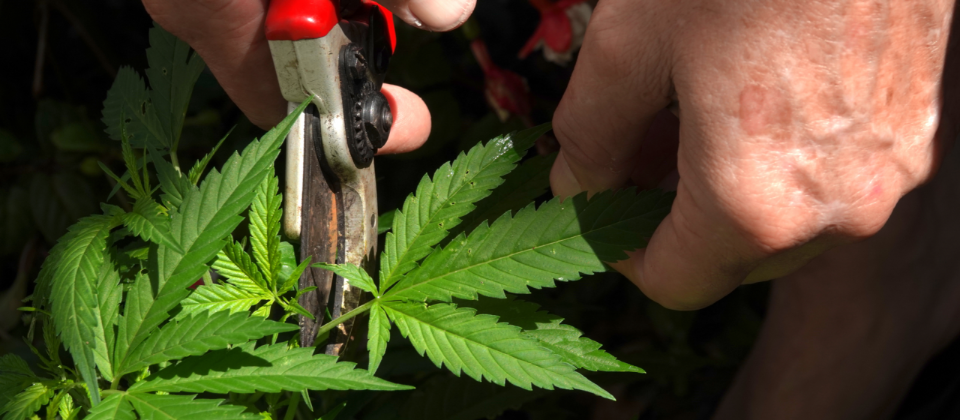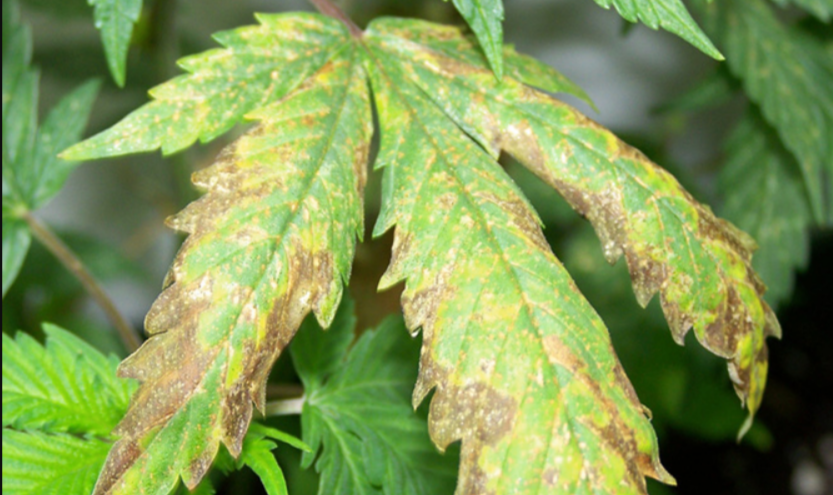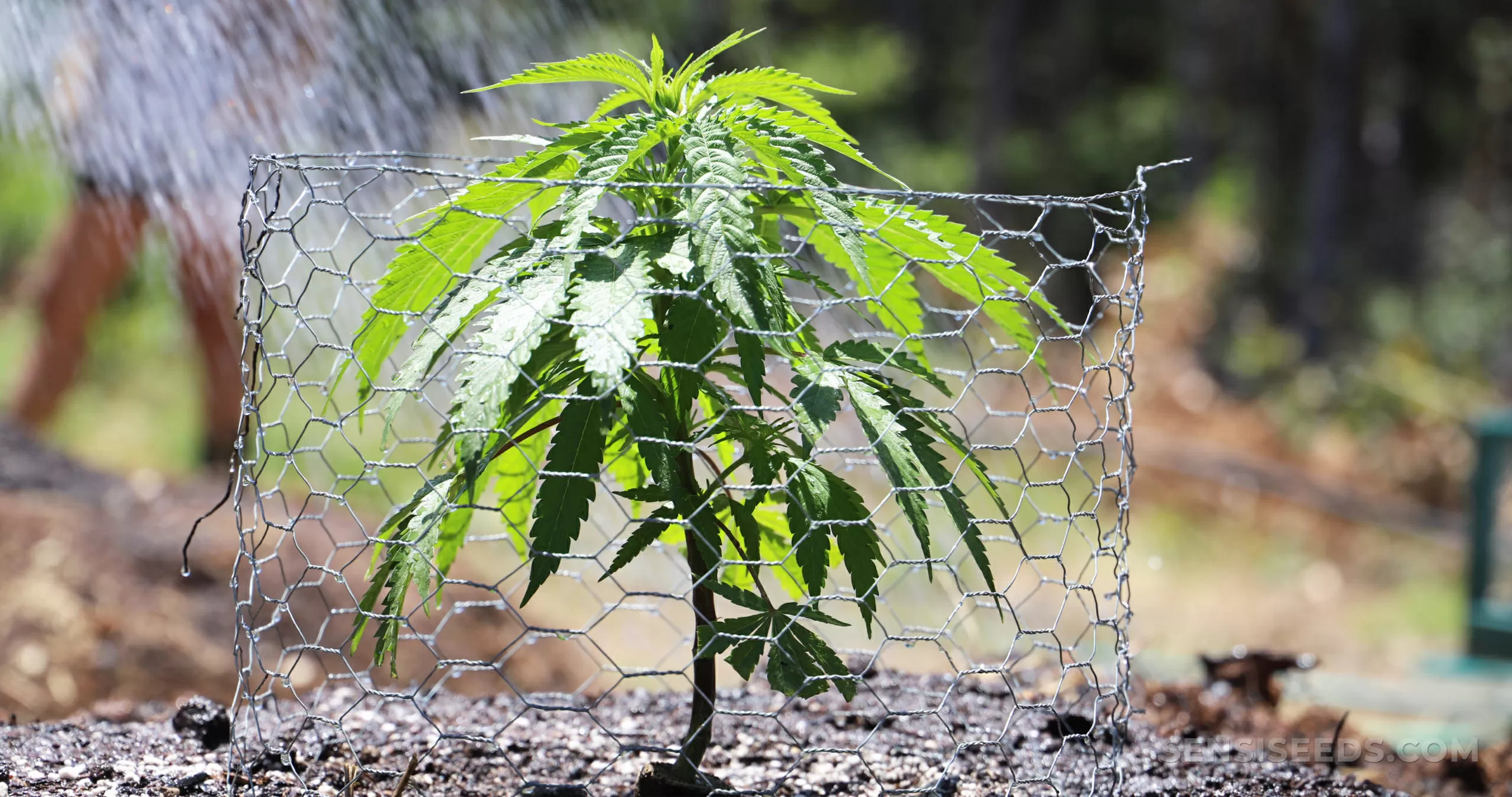For many marijuana enthusiasts it is simply a hobby, for others a true art form. Let's face it: growing marijuana, although enjoyable and relaxing, requires a lot of trial and error, a lot of practice, but at the same time it inevitably involves small and large mistakes. It goes without saying that learning what have always been considered the fundamentals of cannabis cultivation is absolutely essential.
However, it must be borne in mind that this practice is in fact more complex than one might initially think: if the aim is to obtain the most satisfactory results possible, one must invest time, passion, dedication and care to ensure that the plants develop and grow in the best possible way.
Experience plays an important role, but by paying close attention and taking a few simple steps, you can avoid mistakes when growing cannabis and still get the desired harvest.
Furthermore, when you grow your cannabis plants, they will turn out to be female, hermaphrodite or male plant, that is a hybrid of both sexes. Knowing the difference is important to maintaining a solid growing operation, whether you are planning to cross strains, maximising the yield of your female plants, or studying each of the types.
We have therefore decided to create a guide to the most common mistakes that can generally be made when choosing to grow marijuana, so that you can venture into the many facets that make this practice unique and get the desired results more easily.
Unsuitable location for cultivation
When you start growing marijuana, the grow place or space it plays an important role.
If you prefer a home environment and therefore indoor growing, you should bear in mind that you should have all the necessary and useful equipment in advance: grow boxes, ventilation and aeration systems, soil and adequate lighting are all essential and should certainly not be underestimated.
On the other hand, if you choose to grow your plants outdoors it is important not to underestimate the importance of your privacy and to make sure your plants are placed away from prying eyes. It is true that the balcony is apparently the ideal place to grow your plants, as it is well lit and has adequate exposure to the sun's rays, but neighbours and curious onlookers might still consider your plants taboo, leading to inevitable and unpleasant consequences. As they say, you can never be too careful!
Bad seeds or seeds of dubious origin
Among the most common mistakes related to cannabis cultivation, the most frequent ones undoubtedly involve the choice of genetics and seeds: their quality should be a key point when undertaking this practice, as it is a feature that contributes significantly to the success of the harvest.
Old, poorly preserved seeds of dubious origin will not allow the herb to reach its full potential, no matter how hard you try. High-quality genetics allow plenty of room for manoeuvre, leaving the field free for experimentation while ensuring consistently satisfactory results in terms of inflorescence and therefore concentration of active ingredients such as THC and CBD. This is a common mistake, especially among beginners who, due to their inexperience, often overlook this factor as insignificant.
Old or poor potting soil
Soil can vary significantly in quality depending on its characteristics, and one of the most common mistakes is to assume that such organic material is one and the same. Cannabis requires specific nutrients, whether we are talking about growing outdoors or indoor: old, poor or poor quality soil may not have the necessary nutrients to ensure the correct development and subsequent growth of the plants. It is therefore best to check all the characteristics of the soil before buying it, taking care to carefully analyse its composition. Specific cannabis soils are available on the market that are of the highest quality and guarantee the best results with the least amount of effort.
Forcing germination
Germination is the most delicate and important stage of the whole marijuana plant growth process, because in the early stages of development, the buds are particularly vulnerable: even slight pressure is enough to damage them, perhaps simply in an attempt to uncover them, monitor their progress, or move the substrate.
The 'birth of the sprout' usually takes about ten days, so never make the mistake of being too impatient, allowing nature to take its course in complete peace and quiet, without forcing anything.
Excessive pruning

Pruning is the technique of shaping cannabis plants, stimulating their energy and allowing them to grow strong and healthy by removing unnecessary branches and small fronds.
Excessive pruning or pruning that is too deep and carried out in an 'extreme' manner can compromise the cultivation, representing a considerable shock for the plants themselves, which will inevitably suffer a 'trauma' that could even cause their death. It is therefore important to remove only the parts that are really superfluous and always do so in a progressive manner, using the necessary caution, especially if you are a beginner.
Excessively tangled roots
When it comes to cannabis cultivation, the roots should not be neglected either: they need adequate space to develop properly, thus fulfilling their function. Healthy roots, no matter how large they are and how solidly they are gathered together in a hank, will produce an equally healthy and strong plant.
However, if the roots do not have the necessary space to expand, for example due to a small pot, they can become entangled, resulting in an overly compact root system that will not allow the plant to absorb essential nutrients properly.
This error is easily foreseeable: it is essential to choose sufficiently large pots where the roots can develop and grow freely. Otherwise, transplanting will be necessary.
Fertiliser abuse

When it comes to fertilisers, a deficiency is always less harmful than an overuse of nutrients: over-fertilisation can have a detrimental effect on the health of marijuana plants, whereas a deficiency will merely reduce the yield without causing the permanent and lethal damage of over-fertilisation.
Cannabis has special nutritional requirements: the proportions of phosphorous, nitrogen and potassium must therefore be precisely adjusted and adhered to. It remains possible to increase the dosage only at a later stage, and this should be done with care and attention.
Inadequate light and humidity levels
Inadequate, excessive or poor light levels can significantly affect the health of cannabis plants, reducing their ability to assimilate all the necessary nutrients, slowing down photosynthesis and, in extreme cases, leading to so-called 'stretching', where the stems tend to stretch in an attempt to get closer to the light source in the absence of light.
Placing specific LED spotlights, strictly adhering to the required photoperiod, will ensure an optimal production yield. On the other hand, exposing plants too much to the light source can lead to thermal stress, literally burning the leaves and weakening the specimens: it is essential in these cases to maintain a distance of about 30 cm from the plant to the light source to best preserve its health, allowing it to carry out its growth and development processes correctly.
Similarly, the level of humidity also plays a key role: too high a level can lead to the formation of mould and fungus. If, on the other hand, the humidity is too low, the plant can suffer considerable stress, as it is forced to absorb too much water, and can even 'suffocate'. In general, the humidity should always be between 40% and 50% during the flowering phase and between 50% and 60% during the growth phase.
Overlooking the importance of pH
When entering the wonderful world of cannabis cultivation, it seems essential to monitor the pH of the substrate. Cannabis is only able to absorb all the nutrients it needs when the values are within a defined range.
Excessive or markedly reduced levels can be detrimental to the plants, leading inevitably to disease. The substrate should always have a pH of between 6.0 and 7.0. In hydroponic system or soilless cultivation between 5.5 and 6.5.
The pH can easily be controlled by adding specific products to the water that reduce or raise the pH level optimally. It remains essential to have a pH measuring kit or a simple pH meter.
Incorrect irrigation and ventilation
A common and serious mistake is to over-water your plants or cuttings. If you are not particularly experienced, interpreting the water needs of your marijuana cultivation may not seem so straightforward. You should always bear in mind that excess is far more harmful than deficiency, so it is best not to overdo it.
A lack of water is manifested by leaves that tend to droop downwards, appearing almost lifeless, a situation that can easily be remedied by repeated watering after a few hours. Excess watering, on the other hand, can lead to chlorosis or root rot. It is therefore important to give the plants the opportunity to absorb the water properly and to avoid watering too frequently. By simply touching the surface of the substrate you can tell if the plants need water by seeing if it is dry.
Another common mistake is incorrect ventilation, especially when growing cannabis indoors: make sure that the space used for this practice has an efficient and fully functional ventilation system to ensure proper air circulation, which is necessary to promote growth and make the stems stronger as a result.
On the contrary, incorrect ventilation will not allow the plants to receive the amount of CO2 necessary for photosynthesis, which will slow down their development and promote fungal growth.
Forcing the harvest of inflorescences
When the plants reach an advanced stage of flowering, there is a desire to cut the inflorescences prematurely to test their quality, due to the characteristic and pleasant pungent aroma they tend to give off.
Cutting them off prematurely can affect the yield of the crop. It is therefore necessary to determine the best time to do this by analysing the characteristics of the inflorescences in depth, using a magnifying glass or a macro photographic lens to examine the trichomes.
The trichomes should appear opaque amber in colour and milky to ensure the beneficial effects of the cannabis resin, expressing the maximum concentration of the cannabinoids THC and CBD.
Neglecting your privacy
One of the main reasons for cannabis plants being confiscated by the police or stolen is a particular propensity to talk about cultivation with one's friends, extolling its characteristics and success. This is a beginner's mistake that should always be avoided. It is best not to let pride get the better of you, and to keep as quiet as possible.
This behaviour is the only safety rule that will help you to guarantee your privacy and avoid incurring unpleasant risks, or even worse, criminal consequences.
 Italiano
Italiano Español
Español English
English Français
Français Deutsch
Deutsch
